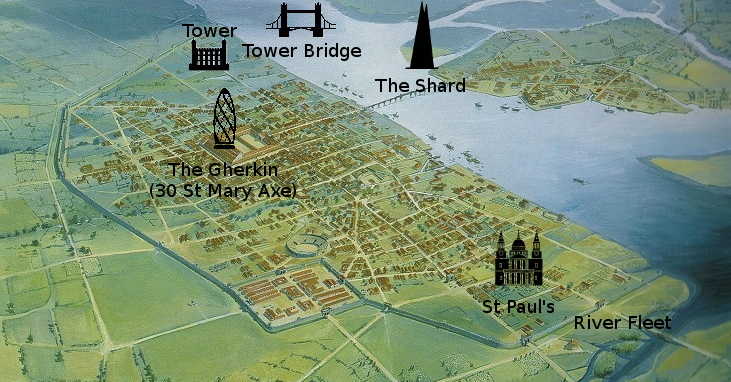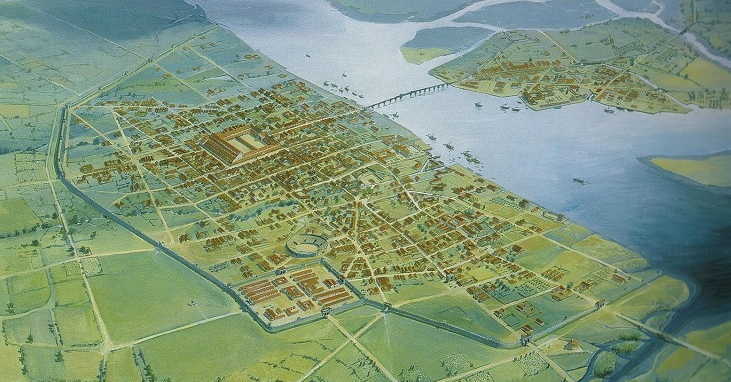


London, then called Londinium, was founded by the Romans in the middle of the first century. The picture shows what it might have looked like. If you want to know where it was in relation to modern objects, move the mouse over the picture. The growth of London graphically is:
video  .
.
The history of the City of London is almost 2000 years long. London is the second largest city in Europe after Moscow, the second largest port city in Europe after Rotterdam, and the second most important financial and commercial centre in the world after New York.
London has an area of 1579 km² and a population of ≈9.5 million.
London has 32 boroughs (plus the City, which has special status).
London is located in both hemispheres of the Earth at the same time. Of course, London is the capital of the country, but... Actually, no law says that. A land of traditions, why write it down when it's just the way it is.  As the state language is not established in the country. But you won't find a clumsy seller in a store, hair salon or ice cream stand on the street who does not speak English.
As the state language is not established in the country. But you won't find a clumsy seller in a store, hair salon or ice cream stand on the street who does not speak English.
A lot of high-rise buildings have been built in London recently. But the construction is under the watchful eye of the city government. No building that hides the beautiful views will receive a building permit. Tourists still have to see the most important things from afar. Some buildings even had to be built at an angle for the sake of it - for example, the Leadenhall Building, which has therefore received the popular name Cheesegrater.

London used to have a lot more rivers than it does now. A large part of these were polluted or remained under buildings and are now directed underground into vaulted passages or pipelines.


There are weeks to explore in London. Who would ever manage to go through the 200+ museums in this city? But if you happen to be there for the first time and only for one day, I offer a small route where you can see all the most important places. A walk